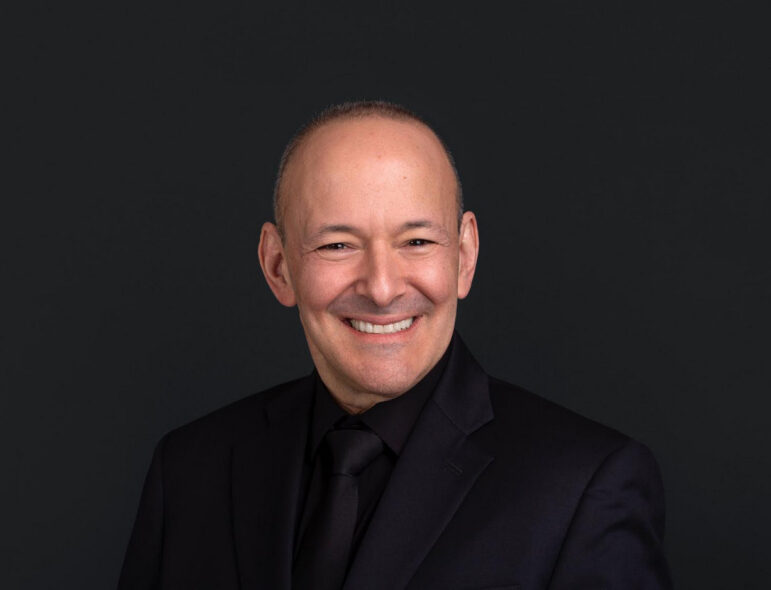Greenwich Symphony opens its 2022/2023 season the weekend of September 10-11 with a terrific program—three dances from Leonard Bernstein’s On the Town, Symphony No. 7 by Sergei Prokofiev, Poem for Orchestra by William Grant Still, and, to frost the cake, Rhapsody in Blue by George Gershwin.

Adding to the excitement is the arrival of Stuart Malina, Greenwich Symphony Orchestra’s new music director. (Maestro Malina succeeds David Gilbert, who over the past 45 years turned the orchestra into a small gem.) Malina will also play the Gershwin while conducting from the piano.
Malina’s career in music unfolded slowly.
“I was playing the piano at age four, but it was very much just for fun,” he said. “What really changed things for me was in middle school I discovered that I had a large ability to play music at sight, and suddenly I was very much in demand. I was doing a lot of playing, accompanying for singers and instrumentalists at school, and over the next several years I became the music director for all of the school productions and summer productions.”
Still, music was “just for fun.” Entering Harvard as a math major, he soon found himself utterly bored by math, so switched to music theory and composition but with an eye to eventually going to law school. Only in his senior year did he decide on a career in music.
“When I graduated I knew I wanted to pursue conducting. At that time there were two tracks: go to Europe and get a job at an opera house and work your way through that system, or apply to graduate school. I didn’t want to leave the country.”
At the Yale School of Music, he studied under one of the great conducting teachers of that time, Otto-Werner Mueller, then followed Mueller to the Curtis Institute of Music, where he studied under him for another two years.
Degrees in hand, he embarked on a career that spans genres, from classical to pops to Broadway—in 2003, he won a Tony Award for orchestration with Billy Joel—and includes both conducting and solo piano performances. Home base now is Harrisburg, where for 22 years he has been music director of its orchestra. He is also principal guest conductor career of the Florida Orchestra and music director of the Lake Placid Sinfonietta, which performs in the summer.
Malina started playing Rhapsody in Blue in the early 1990s, when he was associate conductor at the Charleston Symphony Orchestra, and in 2007 he made his Carnegie Hall debut playing it, conducting the New York Pops from the piano.
“It’s a good piece for me,” he said. “There are certainly technical challenges to it, but they’re challenges that fit into my technique very well.”
Thinking about the composition, he muses, “ It’s episodic. When you look at the compositions of Brahms or Beethoven, from the very beginning there does seem to be an inevitability of where the music is going. With Rhapsody in Blue, it’s a rhapsody—it goes on like a stream of consciousness in a certain sense.”
George Gershwin’s Rhapsody in Blue was commissioned in 1924 by Paul Whiteman, a famous band leader in New York who was organizing An Experiment in Modern Music, a concert designed to explore jazz, the music bubbling up at that time. Many considered improvisation essential to jazz, but Whiteman thought the genre would benefit from orchestrations with formal, written arrangements. He asked Gershwin to write a concerto-like piece for a piano and Whiteman’s band of twenty-three musicians. (Both a concerto and a rhapsody showcase a particular instrument, but a concerto is made up of separate movements, while a rhapsody is one extended movement.) Riffing on Whistler’s paintings with titles like Nocturne in Black and Gold, Gershwin titled the piece A Rhapsody in Blue. It combines elements of classical music and jazz—including varied rhythms, tempos, and piano styles; lots of rubato; blue notes—and is thoroughly American in spirit.
Composed in five weeks, it was then given to Ferde Grofé, Whiteman’s arranger, to orchestrate. It’s not known exactly what Gershwin played at the premiere; Grofé had written the score for the Whiteman band, but Gershwin improvised at the piano. Grofé scored the piece, including the piano part, for a full symphony orchestra in 1942, and that’s what will be performed at the GSO concerts.
Whiteman’s concert, on February 12, 1924, drew an eager audience, including many musicians, that packed Aeolian Hall in Manhattan. The program was packed too, with 26 compositions, many of them mediocre. Gershwin’s was next to last on the program. The audience was restless and some were leaving when the opening clarinet glissando was played. (That glissando was the happy result of a moment of levity during a rehearsal, when Ross Gorman, stretching the notes, played the opening in a jazzy, humorous fashion. Gershwin loved it, and urged Gorman to heighten the “wail.” The glissando is now thought to be as recognizable as the opening notes of Beethoven’s Symphony No. 5.) Enraptured, the audience responded with “tumultuous applause.” Rhapsody in Blue launched a new era in American music and established Gershwin as an eminent composer. Considered the composition that epitomizes the Jazz Age, the piece soon became—and remains—one of the most popular of all concert works.
Greenwich Symphony Orchestra performs at Greenwich High School on Saturday, September 10, at 7:30, and Sunday, September 11, at 3:00. Tickets (adults—$40; students—$10) are available at the door or at Greenwich Symphony.